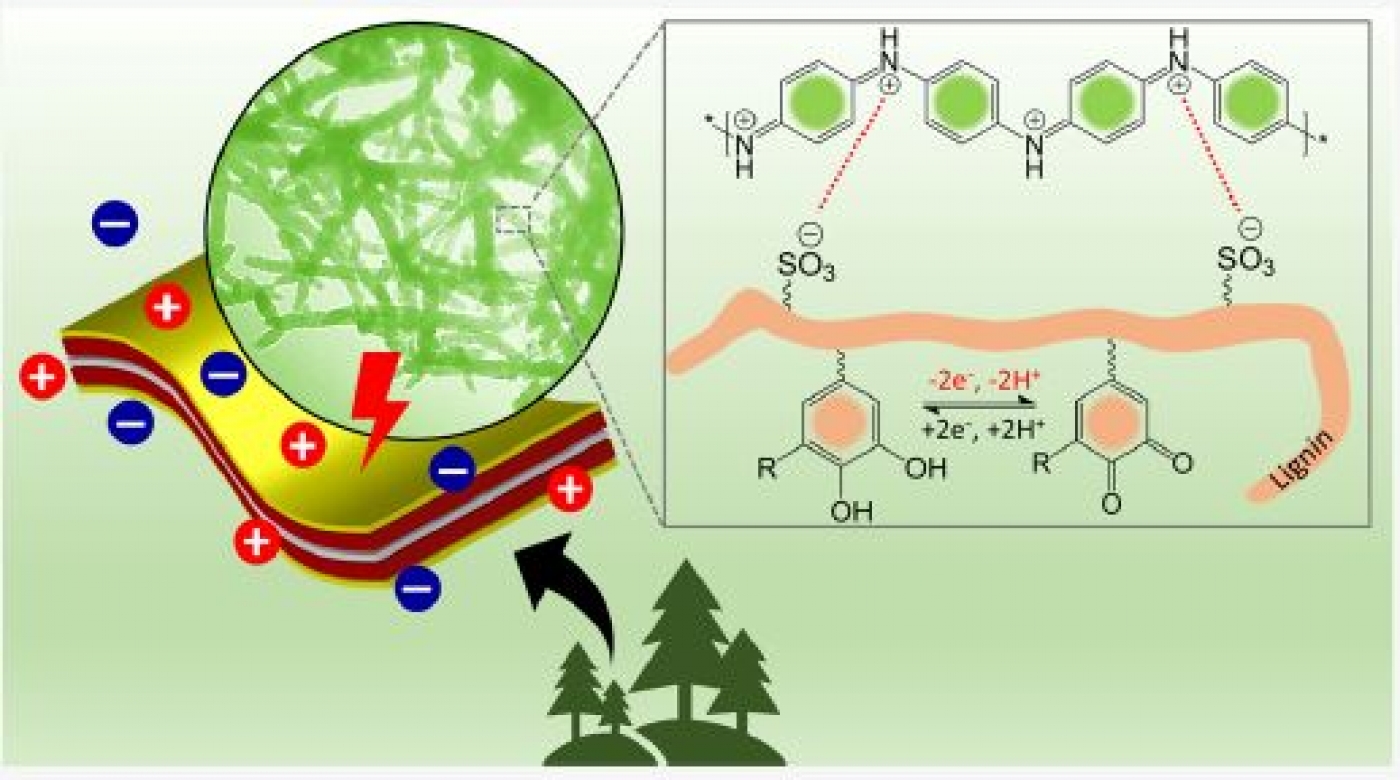Due to a large number of environmental concerns, the development of highly efficient, low-cost, reliable, sustainable, and environmentally benign energy storage systems is imperative.
Although batteries are the leading energy storage technology today, the use of electrochemical capacitors with energy storage characteristics that complement those of batteries has been increasing substantially over the past decades. A variety of approaches have been considered to boost the charge capacity of conducting polymers. In particular. lignin, which is second only to cellulose in abundance, represents 20 to 30% of the solid weight of trees as well as other lignocellulosic biomasses and is comprised of nontoxic and highly branched polyphenolic groups. Direct utilization of lignin or its derivatives such as sulfonated lignin (known as lignosulfonate, LS), as a pseudocapacitive material opens up new possibilities for the development of sustainable active materials for value-added applications, as the phenolic moieties on the lignin can be converted to redox-active quinone/hydroquinone species.
A facile, one-step electrodeposition approach was developed for the preparation of a polyaniline-lignosulfonate interconnected network as an excellent supercapacitive material. With intelligent engineering of the polyaniline-lignosulfonate nanoarchitecture via optimizing the electro-synthesis conditions, the ion transport pathways and the electron transfer networks improve dramatically, leading to high pseudocapacitance and excellent rate performance. The symmetric all-solid-state and flexible PANI-LSIIPANI-LS device delivers a high specific energy (21.2 W h kg-1 at 278.5 W kg-1) along with an outstanding specific power (26.0 W h kg-1 at 14.5 W h kg-1) that outperforms most polymer-based symmetric devices and displays excellent capacitance retention (87 % of its initial capacitance after 15000 charge-discharge cycles at 10.0 A g-1) in a poly (vinyl alcohol)-in-H2SO4 gel electrolyte. Excellent flexibility of the all-solid-state prototype device further reveals the potential practical applicability of this design as a promising architecture for the development of high-performance state-of-the-art metal-free and environmentally benign supercapacitors for applications in flexible electronics.
Morphological and structural characterization of PANI-LS and PANI is as follows:






